Welcome to the foundations sections.
Your journey begins here.
You can listen to the Podcast episode – Episode 7: Fundementals of The Glucose Never Lies
Watch the YouTube Video
Or, enjoy the read.
Your diabetes team will have done a good job teaching the basics. However, these foundations are fit to build a mansion upon. Do not skip ahead. Get your skin int he game!
Before you got type 1 diabetes
Take a look inside people without diabetes.
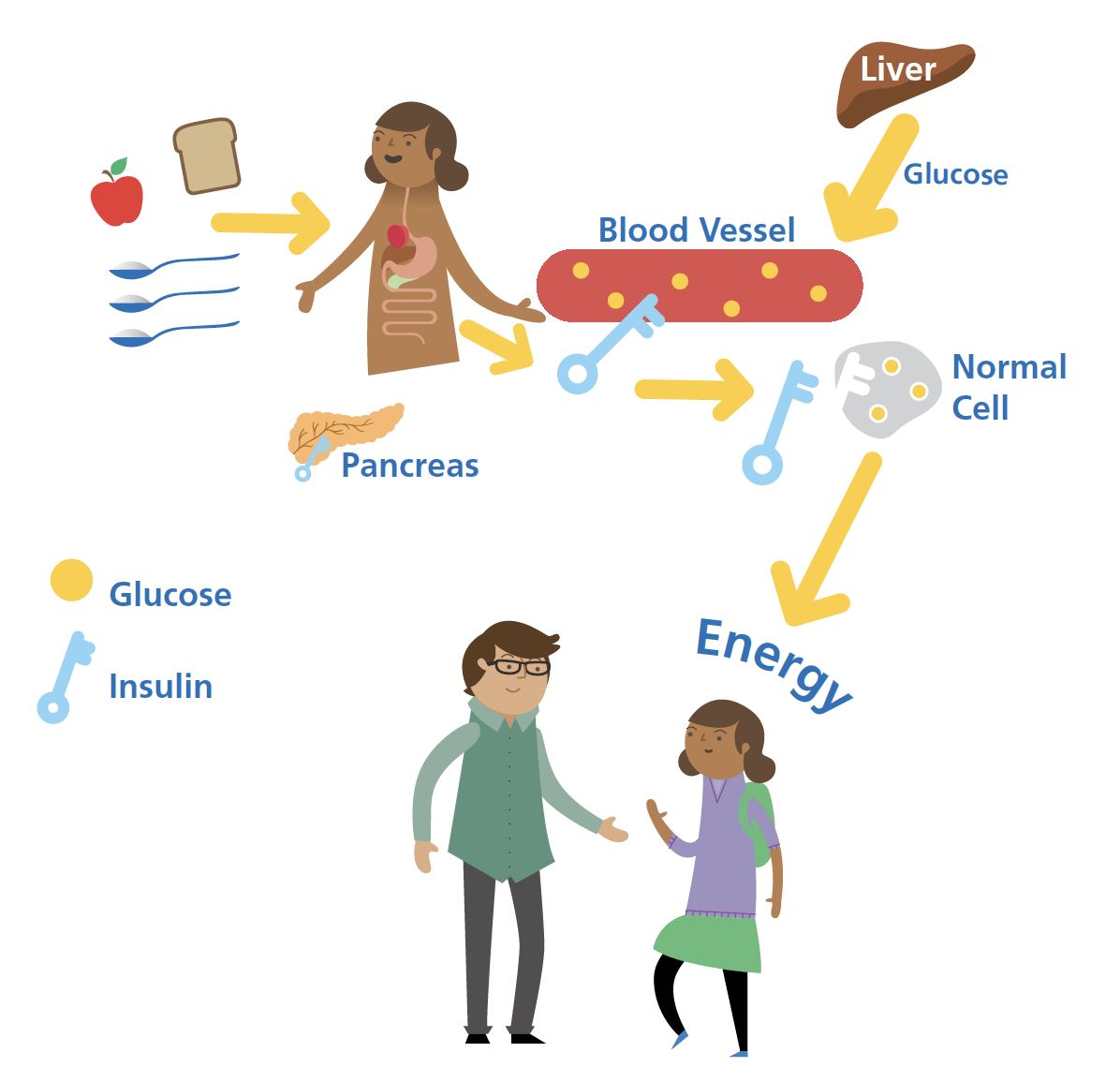
Key things:
- Glucose enters the bloodstream from food, of which carbohydrate has the biggest impact.
- Glucose stored in the liver is steadily released into the bloodstream 24 hours a day.
- Insulin secreted from the pancreas works like a key to open the door of the cell to let glucose in.
- Glucose in the cell is used to produce energy.
- The blood glucose level is tightly regulated between 3.3-6.7mmol/l (60-120mg/dL).
- If the glucose level drops to 3.3mmol/L (60mg/dL), the pancreas slows down insulin output.
- If the glucose level increases to 6.7mmol/L (120mg/dL), the pancreas speeds-up insulin output.
What causes type 1 diabetes, and what are the consequences
For reasons that are not entirely clear, your body has attacked the insulin-producing cells of the pancreas. This is called auto-immunity, a friendly fire by the immune system.
Very quickly, you have gone from being able to secrete sufficient insulin to regulate the glucose level to virtually none at all.
Dani, to answer the questions circulating in your head:
- It’s not your fault
- There’s nothing you could have done to prevent it
- The world is NOT conspiring against you
- It’s simply the chaos of the uncertain world we live in and the wonders of biology
Take time to cry it out and release the grief.
As you know, I am emotionally limited- well, I was until I hit a major depressive episode in 2024. So, in 2008, I only took a couple of hours to get into problem-solving mode!
As a parent, it’s important to understand that your children, in my case, Grace and Jude, will need you to be invested in what matters most, the here and now!
So, park those thoughts for now and crack-on with the most important thing: learning and taking action.
You can heal once the dust has settled, and your children are safe and happy.
Here are the consequences of no insulin.
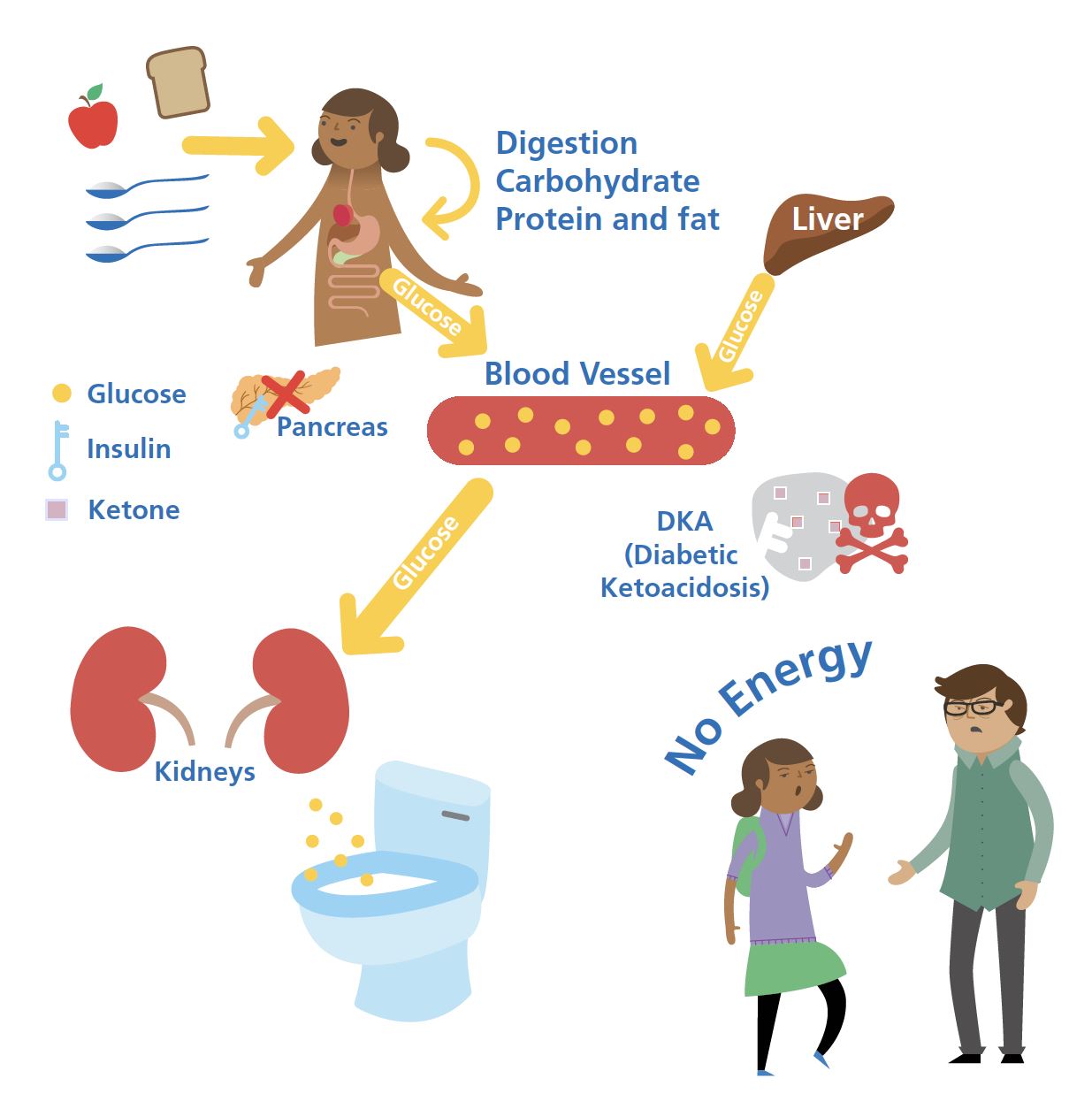
Key things:
- Glucose continues to enter the bloodstream from food and the liver.
- Insufficient insulin leads to glucose soaring well above 11.1mmol/L (200mg/dL).
- The cells ramp up energy production from body fat, leading to weight loss.
- Increased fat burning leads to ketone production and acid build-up.
- Left unchecked for too long, the acid skyrockets and can lead to death.
- The kidneys go into overdrive, and you know where every toilet is.
- Toilet trips mean you need to drink more and become very thirsty.
- That’s why there are 4 Ts for identifying Type 1 Diabetes: Toilet, Thirsty, Tired, Thinner.
Insulin to the rescue
Like me, you need to be so grateful for science!
A series of amazing people worked for over 100 years to identify insulin, create synthetic versions, and make it available down the road at the pharmacy. Without these people, you and I would have checked out of the gene pool! Whenever you get down about diabetes, remember this fact.
Insulin has given us the gift of life
How insulin is our saviour.
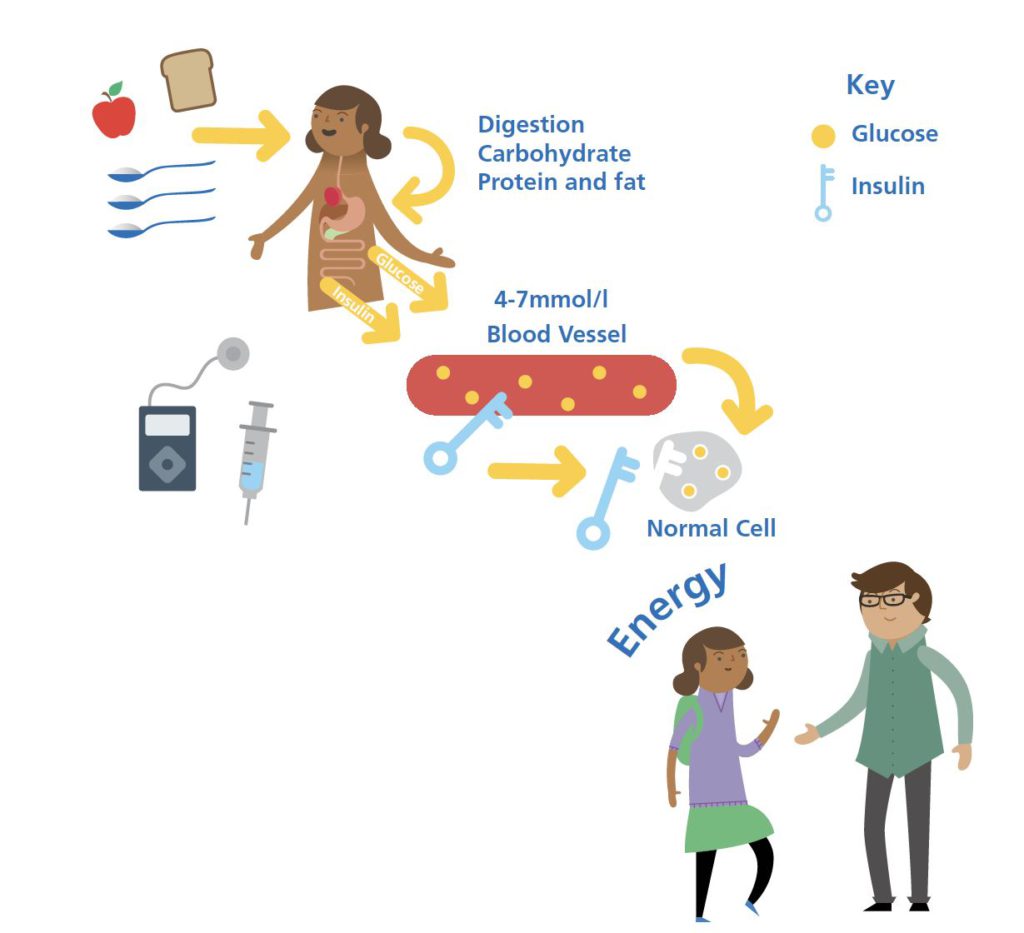
Key things:
- Insulin delivered from injections or a pump replaces the shortfall from the pancreas.
- The challenge is matching the insulin needed to cover the glucose from meals and the liver and keep the glucose level between 4.0-10.0mmol/L (70-180mg/dL).
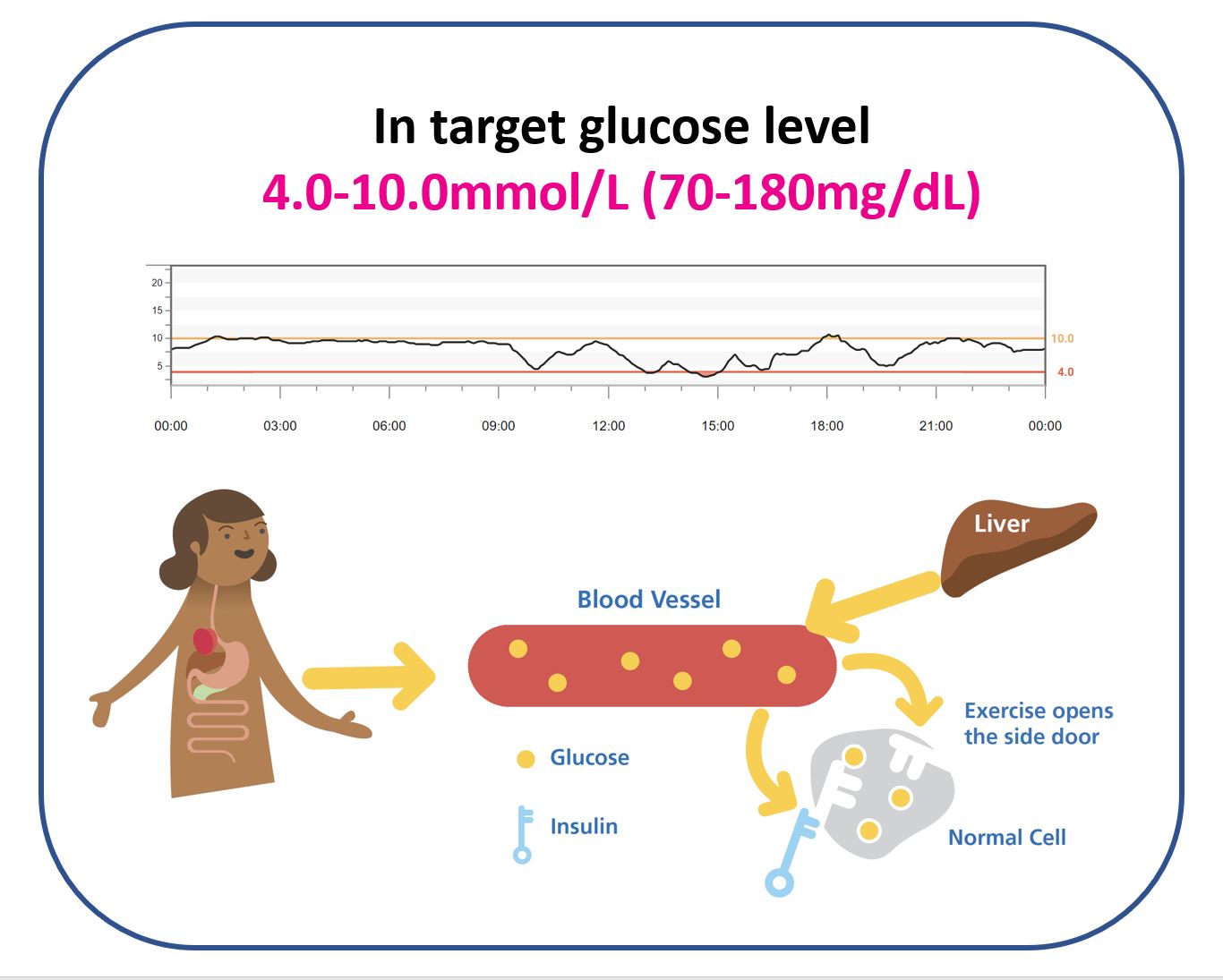
- Too much insulin or unplanned activity and the glucose level drops below 3.9mmol/L (70mg/dL) – hypoglycaemia or hypo.
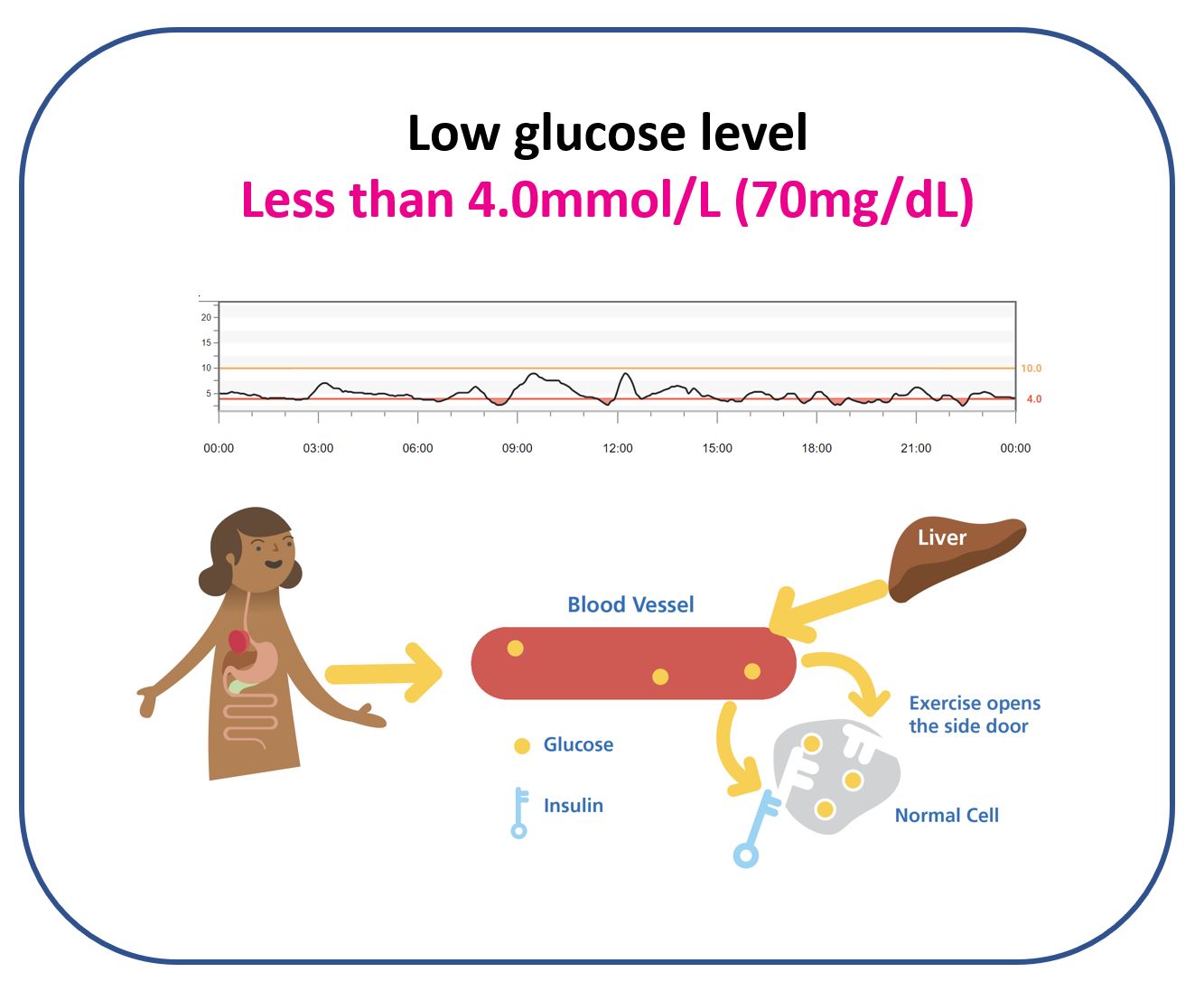
- Not enough insulin for food or the liver’s output of glucose and the glucose level rises above 10.0mmol/L (180mg/dL) – hyperglycaemia or hyper.
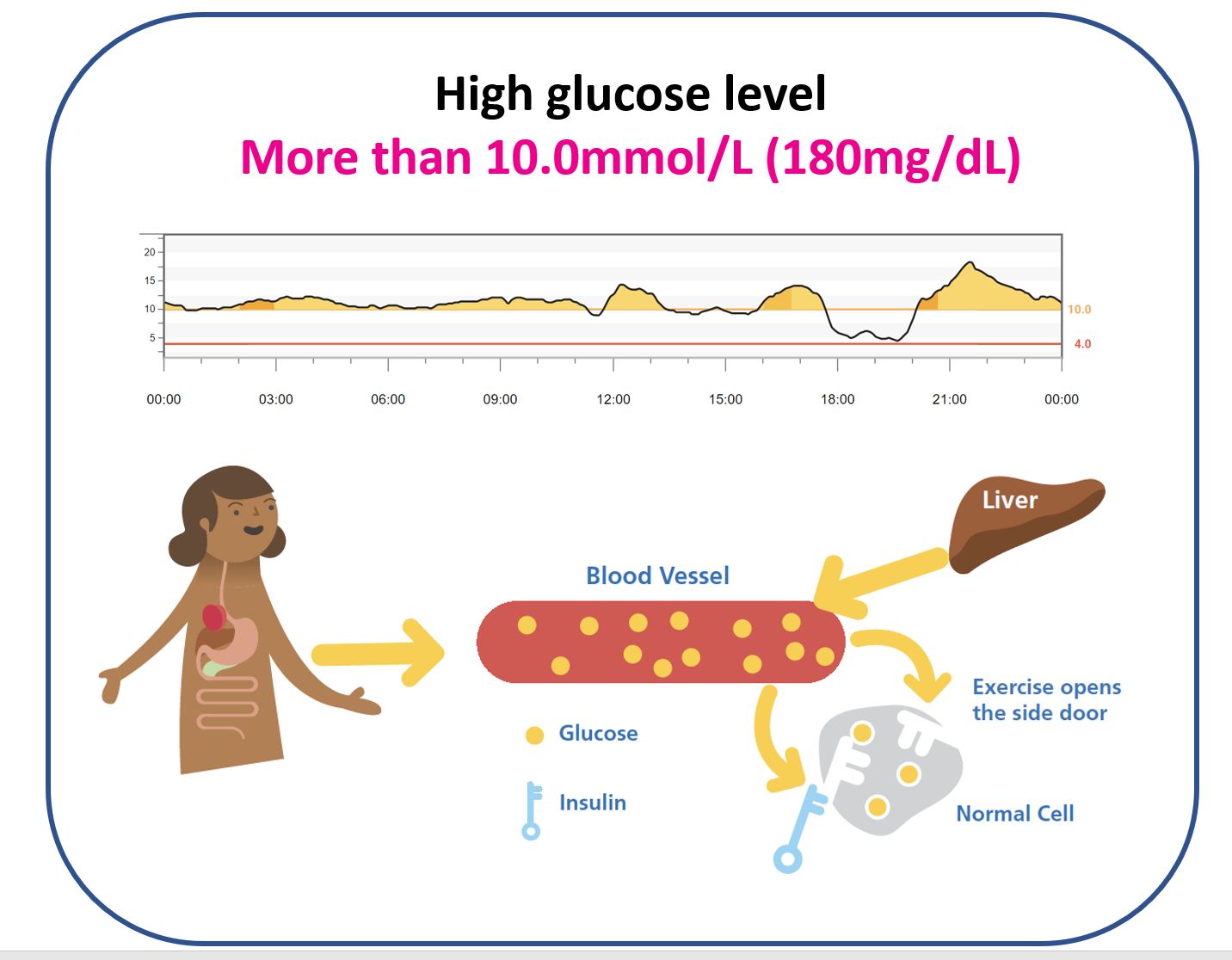
- Counting carbohydrates and giving the right amount of insulin to cover the glucose from its digestion is very important.
- Consistently doing a high level of daily activity is extremely important.
What’s next? Continuous Glucose Monitoring.
If you want to know when a new section of this blog is added, click here.
